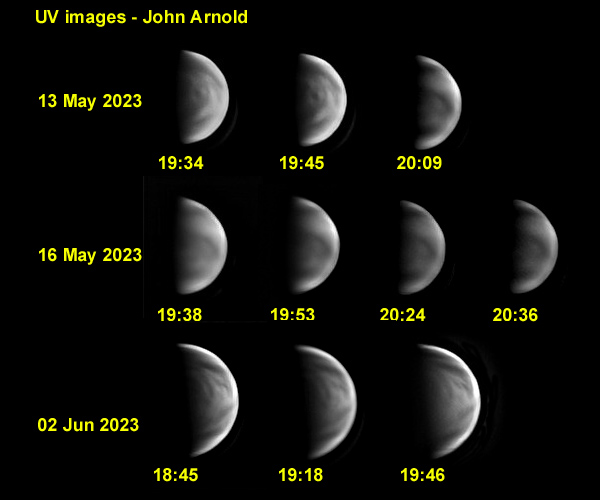
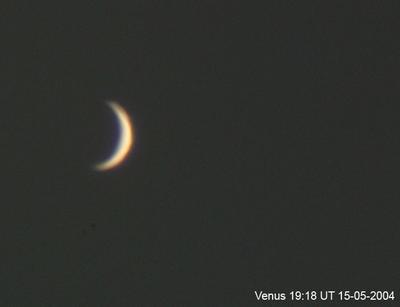
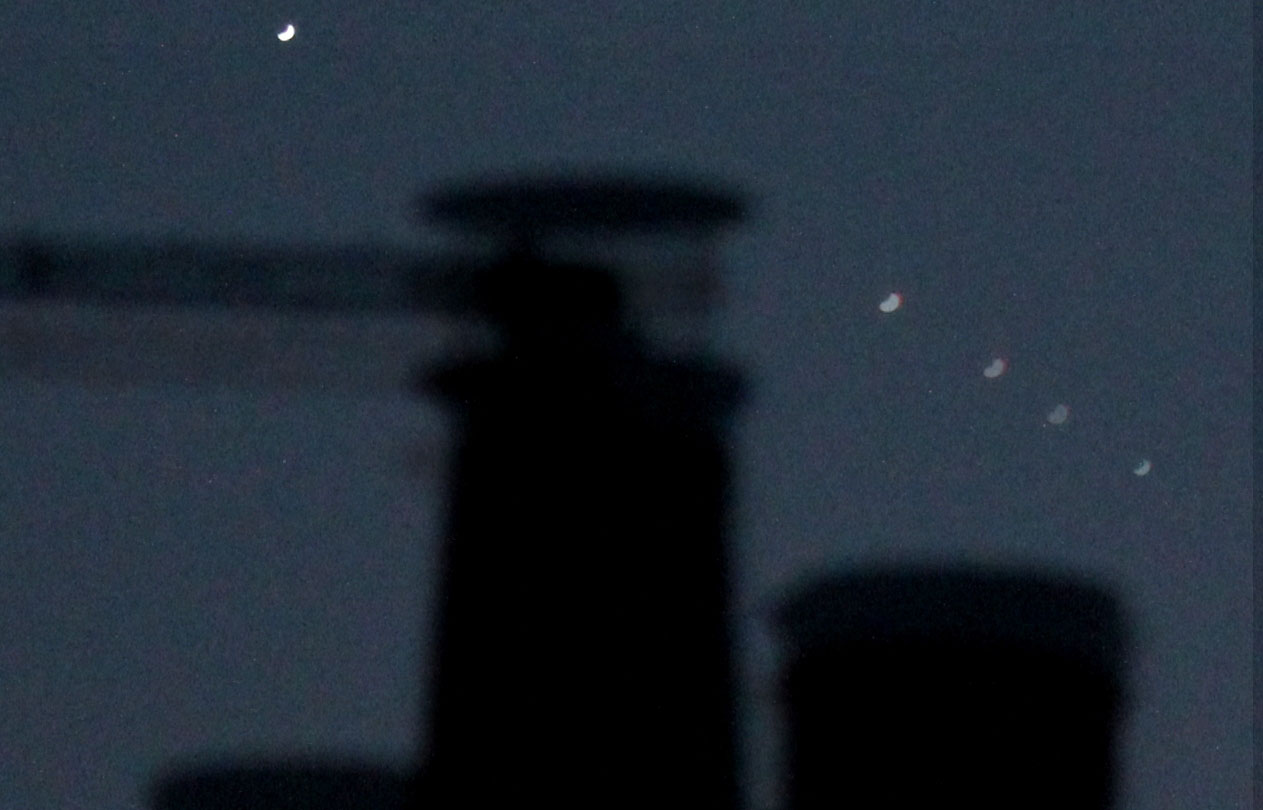 20/05/2020 (John Herbert)
20/05/2020 (John Herbert)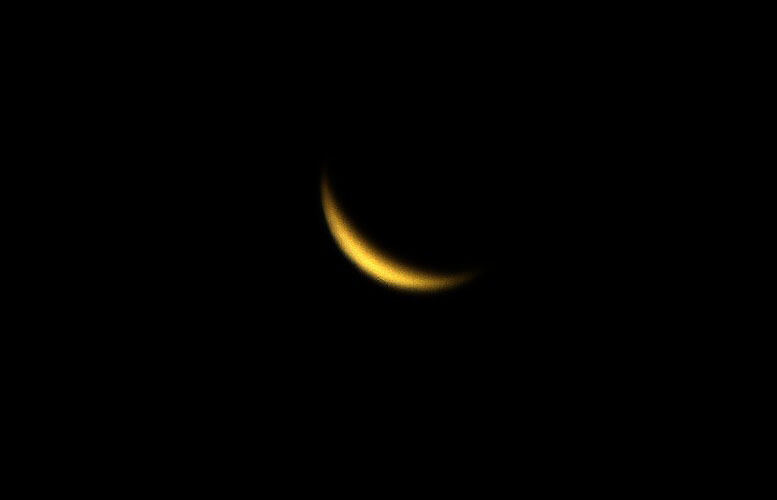 05/2020 (Rod Levene)
05/2020 (Rod Levene)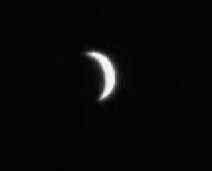 08/05/2020 (Robin Jakeways)
08/05/2020 (Robin Jakeways)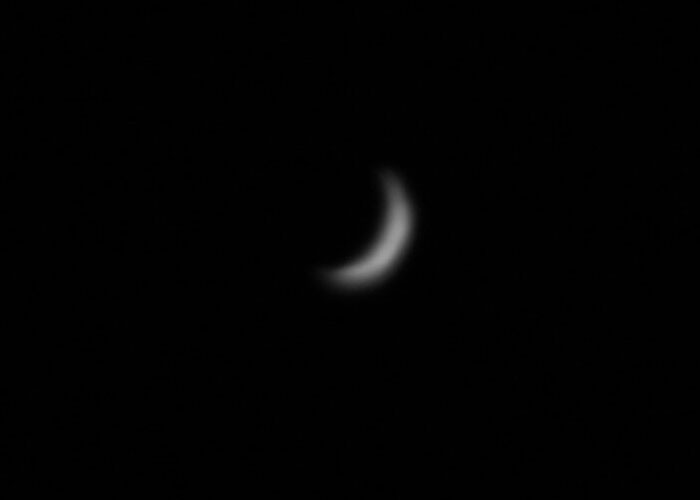 08/05/2020 (Steve Strickland)
08/05/2020 (Steve Strickland)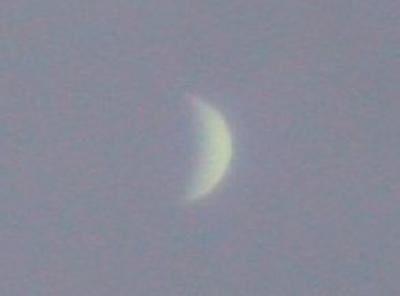 23/04/2004
23/04/2004
Information...
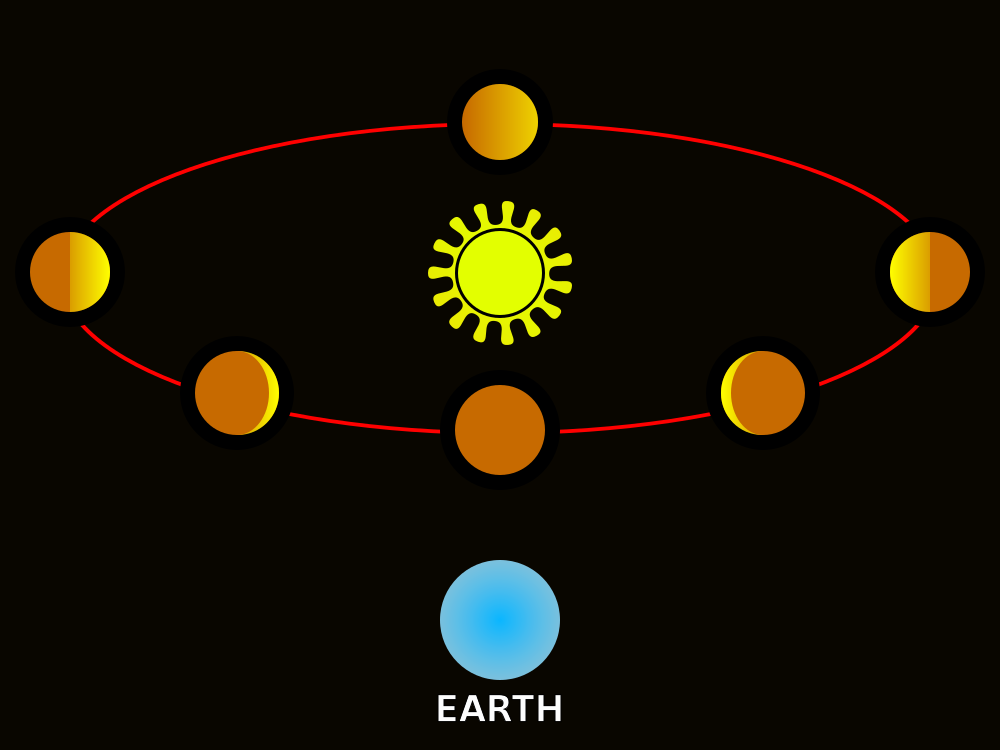
Venus is the second planet from the Sun with an orbital period of 224.7 days, and a rotational period of 243 Earth days. It's rotation is incredibly slow, such that at if you were standing at it's equator, you would only be travelling at 4 miles/hour (compared to 1,040 miles/hour on Earth). Venus' also rotates in a retrograde fashion, meaning that it rotates in the opposite direction to it's orbital motion around the Sun.
The planet is superficially similar to the Earth. It has a mass of approx 0.81 × the Earth; a radius of about 0.95 × the Earth; and a density of 0.95 × the Earth. It is also very different, with an atmosphere comprised of 96% carbon dioxide and is covered in clouds of sulphuric acid. The 'greenhouse' gas effect from the carbon dioxide gives it the hottest surface of any planet in the Solar system, with a mean temperature of 464° C, whilst the pressure at the surface is about 92 × that at sea level on the Earth.
Venus is the 2nd brightest object in the sky. As it lies within Earth's orbit, from our viewpoint, it displays phases like those of the Moon. (See the LAS members images above.)
Named after the Roman Goddess of love and beauty, the planet provides us with the name of the day of the week for 'Friday' (eg. vendredi in French). (Our English derivation of Friday seems to have come from the Norse name for Venus Friggjarstjarna, 'Frigg's star' and the Anglo-Saxon goddess Fríge.)
For more info. see the Wikipedia entry.